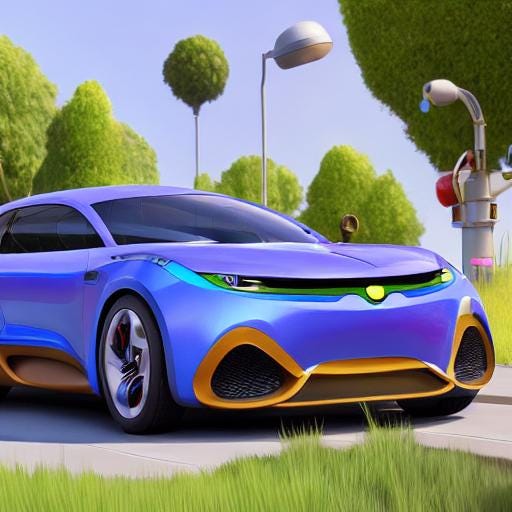The Environmental Impact of Electric Vehicles
An in-depth look at emissions, efficiency, and maximizing the sustainability of electric vehicles compared to gas-powered cars.
Understanding Electric Vehicles and the Environment
Over the past decade, the purchase of electric vehicles (EVs) has seen a significant increase. Many factors contribute to this trend, including the higher efficiency of EVs compared to petrol cars, reduced dependence on fossil fuels, and lower maintenance requirements. One of the main attractions of electric cars is their reputation as a sustainable form of transportation. Unlike hybrid or petrol vehicles, EVs run solely on electric power, which can be produced entirely from sustainable, renewable resources (1).
By the end of 2020, there were 10 million electric cars on the world’s roads, following a decade of rapid growth. Electric car registrations increased by 41% in 2020, despite the pandemic-related worldwide downturn in car sales in which global car sales dropped 16%. Around 3 million electric cars were sold globally (a 4.6% sales share), and Europe overtook China as the world’s largest electric vehicle (EV) market for the first time (2). In the UK, the used car market saw a significant increase in the number of electric vehicles filtering through to second owners. Sales of battery electric cars more than doubled (120.2%) from 6,625 to 14,586, a new record for the first quarter of the year (3).
Emissions from Electric Cars: Tailpipe and Well-to-Wheel
When an electric vehicle operates on electricity, it emits no tailpipe (direct) emissions. This alone makes EVs far more eco-friendly than conventional petrol-powered vehicles. However, to fully assess the environmental impact of an electric vehicle, one must consider the "well-to-wheel" emissions. This term encompasses the greenhouse gases and air pollutants emitted during the production and distribution of the energy used to power the car. The amount of emissions from electricity production varies depending on the source of the energy.
On average, all-electric vehicles emit around 4,450 pounds of CO2 equivalent each year when considering well-to-wheel emissions. In contrast, conventional petrol cars emit over twice as much annually. The specific amount of well-to-wheel emissions your EV is responsible for largely depends on your geographic area and the energy sources most commonly used for electricity in that area (1).
In 2030, in the Stated Policies Scenario, the global EV fleet reduces GHG emissions by more than one-third compared to an equivalent ICE vehicle fleet; in the Sustainable Development Scenario, the level rises to two-thirds (2).
Maximising the Environmental Benefits of Your Electric Car
While an electric vehicle will produce fewer emissions than a comparable petrol-powered car, not all electricity sources are created equal. If your primary motive in purchasing an electric vehicle is to be environmentally friendly, you should consider powering your car with a renewable energy source that you can generate at home, such as solar, wind, or geothermal energy.
Many homeowners who purchase an electric vehicle consider pairing it with a solar panel system on their roof to charge their car. An average home with a 5 kW solar panel installation pays around £7,500 for their system. The payback period varies depending on your location, but most homes throughout the country break even on the investment of solar panels by year seven. Your solar savings can be even larger and payback even quicker when pairing an installation with an electric vehicle. This is because installing solar eliminates what you typically pay for petrol, allowing you to power your vehicle with free electricity produced by your panels (1).
Efficiency of Electric Cars
Apart from the source of power, another reason why electric vehicles are considered more sustainable than traditional vehicles is their higher efficiency. When petrol combusts to power a conventional vehicle, only about 17 to 21 percent of the energy is converted into power for the car. In contrast, EVs can convert 59 to 62 percent of the electric energy into power for the vehicle. This makes electric vehicles more than quadruple the efficiency of conventional vehicles (1).
Sources
Understanding Electric Vehicle Charging Times
This article aims to demystify EV charging times and provide a comprehensive understanding of the factors that influence them. The Basics of EV Charging The time it takes to charge an electric vehicle depends largely on two factors: the size of the car's battery and the speed of the charger you're using. For instance, using a Nissan LEAF and a home charge…








🤣🤣🤣🤣🤣🤣🤣🤣🤣